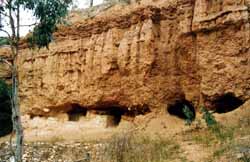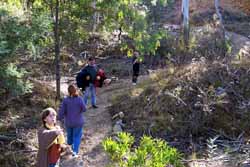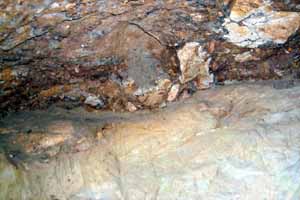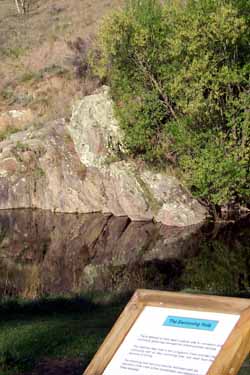|
Working Methods
Alluvial gold (gold carried by river or stream),
as distinct
from reef gold (still in the rock where it was formed
),
although distributed through the gravel, is
concentrated above layers of fine clay and on the
bedrock. The gravel forms parts of ancient river
beds which eroded gold bearing mountains many
millions of years ago. With a distribution of about
one ounce(31gram per troy ounce ), to
every 100 cubic
metres of gravel a cubic metre would yield about
$4- at todays prices.
Since one man can only pan about a cubic metre
a day, faster methods of recovery were necessary.
Water, from above the claims, either flowed down
the face, or, with the help of pipes and nozzle, was
sprayed against the face, washing the gravels
through Sluice boxes, down a tail race, into the
Livingstone Creek.
|
The
claims area as a whole produced
an estimated 58000 ounces of gold.
At todays price of around Aus$400 ounce,
this represents a value of around
23 million dollars.
As most of the claims area was not
worked to its full depth and the ground
south of these claims, right to the foot
of Mt Livingstone, is of a similar nature,
it is estimated that a further 100 million
dollars worth of gold may still be there.
|








